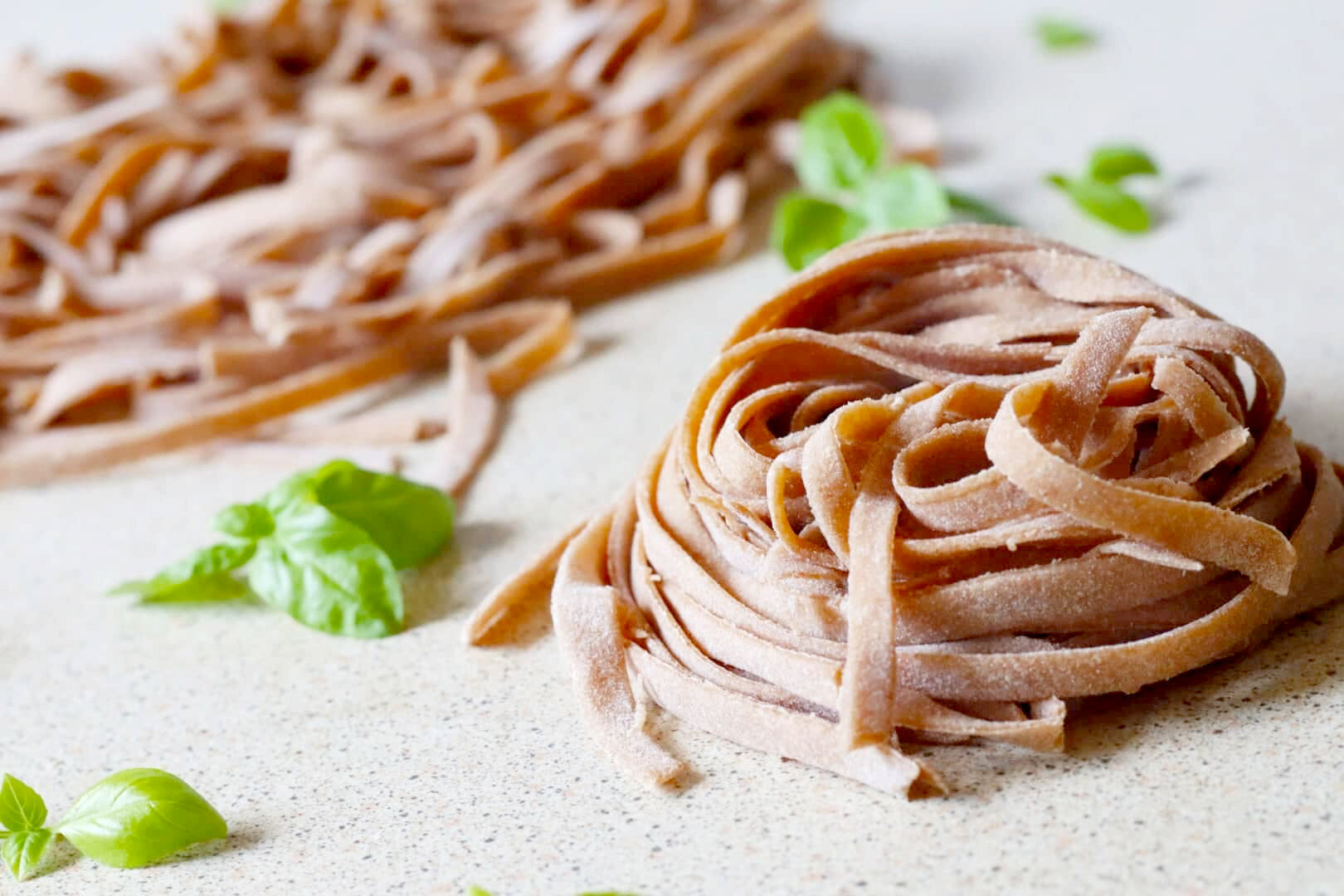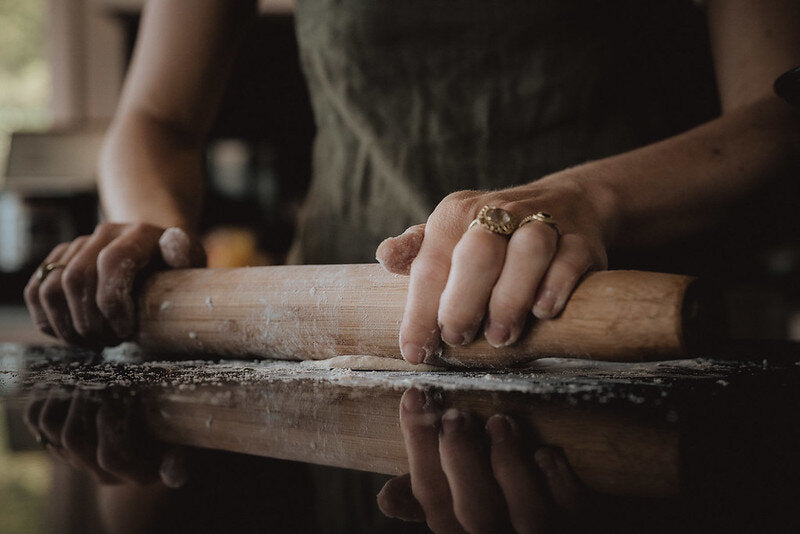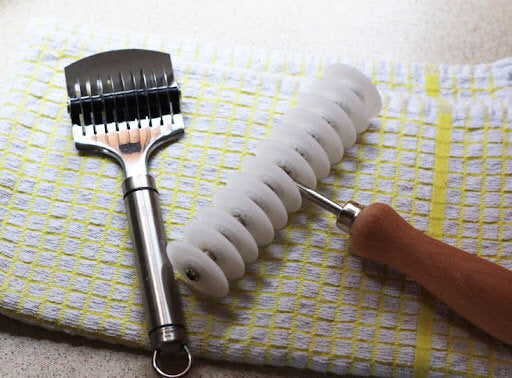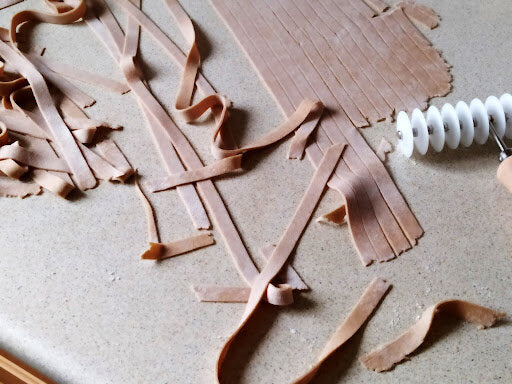
We feel well when we eat fresh foods that have prana, our life force.
When we eat foods that are packaged, preserved, and processed, we can start to feel dull and lethargic.
Pasta is one of those packaged foods people commonly reach for when they want something comforting and simple. The tongue thinks it’s a good idea, but it’s actually difficult to digest. It’s quite dense, and since it’s packaged it has little, if any prana left. Plus there is some tendency to eat too much of it and not chew it well— sound familiar?
This is why we recommend eating fresh pasta. This can be found in markets, but you can also have a lot of fun making it yourself at home! It’s worth it - store-bought dry pasta does not even come close to the aromatic taste of fresh, home-made pasta.
Making fresh pasta from scratch might sound like a very laborious task that requires years of expertise. The reality could not be further from the truth: you do not need to be a trained chef, nor possess any fancy equipment: flour and a rolling pin are pretty much all you need.
Freshly milled flour is ideal. Again, we’re looking for prana in the food, plus it tastes better! Grinding your own flour at home with a grain mill is a wonderful thing, but if this isn’t available to you, see if there are any mills near you, where you can purchase fresh flour. No mills around? Here’s a hot tip - don’t buy flour that has been exposed to the light as this reduces prana quickly. Think about how sunlight fades fabric.
Now, you may be asking why this pasta is egg-free? It’s because eggs are quite challenging to digest, and we are help agni, our digestive fire, do it’s job.
Include pasta as the grain, so augmenting part of your 60/40 bowl. Like all grains, pasta is especially grounding to Vata dosha, great for Pitta and in moderation can be enjoyed by Kapha individuals.
Fresh Pasta
Serves: 2-3 people
Preparation time: 15 minutes
Augmenting
You'll need
-
1 1/2 cups spelt or wholewheat flour - you can mill 1 cup of spelt grain on fine setting into flour
-
extra flour for rolling
-
2/3 tsp salt - to mix into flour
-
1 tsp extra virgin olive oil - or ghee
-
1 tsp ground caraway seeds, optional
-
1 tbsp ground coriander seeds, optional
Here's how
-
Mix the salt with the flour. Stir in the oil with a fork.
-
Boil water and, still using the fork, start adding it to the flour.
-
Continue combining with the fork until you have crumbs of dough looking like cottage cheese.
-
Now use your hands to bring the dough together. It should be fairly stiff.
If the dough is too sticky, add more flour. If it is too hard and dense that you feel you would struggle to roll it out, wet your hand and incorporate the moisture into the dough.
Pasta is forgiving. You can always adjust.
Stiff dough is harder to roll out but it actually yields pasta that doesn't break easily after cooking. You might not even need to dust the surface.
Softer dough will be easy to roll out but you might need to use a little extra flour to dust the pin and the surface.
-
Sprinkle flour onto the surface and roll the dough into a flat sheet, using a rolling pin. You determine the thickness of your pasta.
-
Now cut it into any shape you desire. Ribbons are quick and simple.
Another option is to use a pizza cutter. Cut into any size strips.
A tagliatelle cutting tool, shown in the picture below, can prove really useful. It makes the cutting a matter of seconds.




7. Boil a large pot of water with a pinch of salt.
8. Once boiling, put in all the pasta and give it a stir. Cook for 2-5 minutes depending on the thickness.
9. Using a slotted spoon, take the pasta out of the pot to use as part of your dish.
10. It is a good idea to mix freshly cooked pasta with something oily to prevent it from sticking: a sauce that contains olive oil or ghee is great, or just a drizzle of either works well.
Tips
A balanced bowl containing pasta can be Italian inspired by adding extra virgin olive oil, fresh oregano and basil, or pair with Nomato Sauce and fresh cheese for a delicious meal.
Call your pasta “noodles” instead and make it with Asian influence with fresh ginger, tahini, drops of lime juice and a little fresh coconut.
You can also enjoy your homemade noodles in a savory soup .
Visit our Ayurveda Lifestyle page for kitchen essentials

